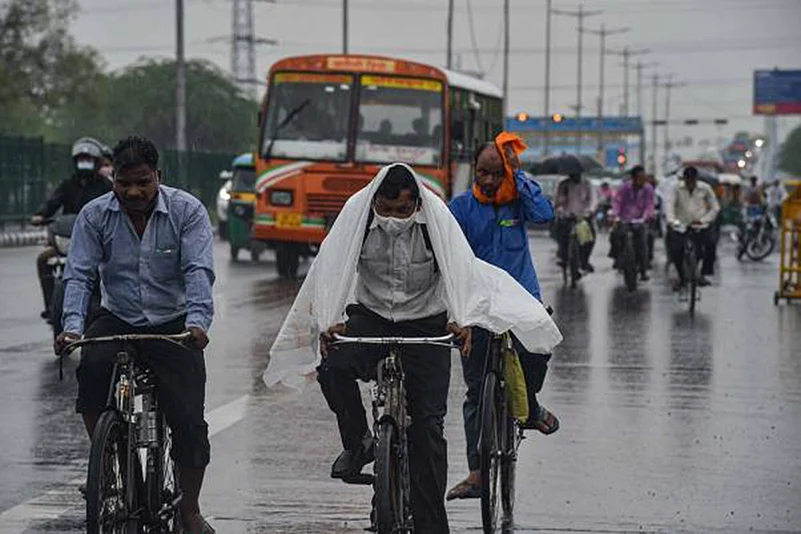Delhi recorded an over 200 per cent increase in red-light violation incidents from January 1 till March 15, compared to the corresponding year-ago period, officials said on Tuesday.
The top 10 locations with the highest red-light violations during this period were in the southern parts of the city. The maximum number of violators were found in Nauroji Nagar, Naraina, Moolchand, Bhikaji Cama Place, Moti Bagh, Lajpat Nagar and Andrews Ganj, among others, they said.
According to data shared by the Delhi Police, enforcement efforts utilising Red-Light Violation Detection (RLVD) cameras resulted in a substantial number of prosecutions in 2022, with 59,937 notices issued within the specified time frame.
"However, the subsequent year, 2023, saw a considerable decrease in RLVD prosecutions, with only 21,089 notices issued during the same period. The most recent data for 2024 showed 69,296 notices were issued within the stipulated time frame," the data showed.
The Delhi Traffic Police has installed 3D radar-based RLVD on major roads and junctions across the city to ensure road safety culture and discipline for citizens by using the red-light detection system.
The system detects vehicles violating traffic rules at a red light on the way and sends details to the control room for issuing e-challans under relevant sections of the Motor Vehicles Act without any human contact, the officials said.
The aim of this system is to prosecute the violators on a round-the-clock basis as deployment of manpower for interception and issuing challans is difficult to do round-the-clock. The evidence-based, non-interventionist approach creates a much deeper impact, they said.
These comparative figures underscore the dynamic nature of traffic enforcement and the importance of leveraging the RLVD technology to promote road safety and deter violations. The fluctuations observed over the three-year period emphasise the need for ongoing evaluation and adaptation of enforcement approaches to effectively address evolving traffic challenges, they added.
"Red-light jumping, a reckless behaviour often leading to fatal accidents and disruptions in traffic flow, has been a persistent challenge on Delhi's roads. Recent statistics reveal a disturbing trend of disregard for traffic signals, endangering the lives of pedestrians, cyclists and fellow motorists," an official said.
"In light of this, the Delhi Traffic Police has launched a concerted campaign to crack down on offenders and reinforce the importance of obeying traffic signals," he said.
The Delhi Traffic Police has bolstered its surveillance mechanism at major intersections and traffic hotspots to monitor and effectively identify instances of red-light jumping, the officials said.
Additional personnel have been deployed at strategic locations to ensure swift response and enforcement of traffic regulations. These officers are equipped with the necessary tools and authority to penalise violators promptly, they said.
Leveraging technological advancements, the Delhi Traffic Police is exploring innovative solutions to enhance enforcement capabilities. This includes the utilisation of CCTV cameras, automated monitoring systems, and digital platforms for streamlined reporting and management of traffic violations, they added.
















